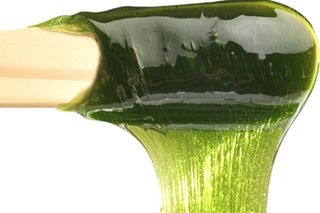
For Women, Beauty Is Often Conflated With Hygiene
Waxing doesn’t make you clean; it only makes you hairless.

It is no secret that the beauty industry thrives on women’s insecurities. Conventional standards of beauty are impossible to match up to. They are founded upon a one-dimensional, non-inclusive perception of the ideal woman, who is tall, thin, fair, with spotless skin, perfect hair, and a well-groomed body. The industry feeds women product after product, one 16-step skincare routine at a time, to quiet the voices in their heads that tell them they’re not pretty enough, not young enough, not clean enough.
Funnily enough, it’s society itself that created those voices in the first place.
While unreasonable beauty standards apply to all genders, it is an established fact that the average woman spends more on her physical appearance than most men do. For example, the average woman in the U.K. spends £180,000 on beauty and personal care products in her lifetime, according to research published in the Daily Mail. The beauty products are, more often than not, incredibly harmful. The world over, advertisements (particularly, promoting fairness in India) make women feel inadequate and then target them with beauty products that are designed to ‘fix’ them.
Why women spend thousands on beauty products has very little to do with vanity and much, much more to do with structural patriarchy that induces shame in women’s minds about their appearance. A lot of these products are sold and marketed under the guise of hygiene and cleanliness. This marketing takes on a twisted form as it guilts women into availing products and services, such as skin care and hair products (shampoos, conditioners, etc.), which are marketed as promoting hygiene but serve to homogenize beauty in all women. A lot of women are tricked into believing that waxing every inch of their skin, no matter how costly and painful it may be, is just good hygiene. Having hairy arms and legs often feels ‘gross,’ which leads women to rationalize the regular waxing/shaving/bleaching of body parts. “It helps keep the body clean and free from germs/infections,” is a line paraded around frequently as women wax and shave themselves bloody.
In 2014, The Cutpublished an article about a paper written by Breanne Fahs, a professor from Arizona State University, who conducted two experiments in an attempt to quantify the disgust women feel towards body hair. In the first experiment, the professor asked several women how they felt about body hair — their own and that of other women. In the second experiment, the professor asked her students to grow out their leg and armpit hair for 10 weeks and keep a journal about it for extra credit. In both the experiments, women expressed their disgust with body hair, their own and even that of other women. Participants in the second experiment also expressed how their boyfriends and mothers were disapproving of the hair, and told them that they were being gross, disgusting and sloppy. The paper, titled “Perilous Patches and Pitstaches: Imagined Versus Lived Experiences of Women’s Body Hair Growth,” showed how women’s compulsion to shave is rooted in sexist ideals of femininity.
Related on The Swaddle:
Women in Korea Are Destroying Their Make-Up to Protest Sexist Beauty Standards
Shaving armpit hair might reduce body odor for some people, but there is hardly any evidence to suggest that this applies to everybody. Lack of hair doesn’t stop the glands in the armpits from producing sweat — the primary factor for body odor. Similarly, shaving pubic hair, and using beauty products for it, might actually be harmful for the genitalia; hair exists primarily to protect them from friction and infection. The Guardian in 2016 reported about a study in the US where 59% of the women surveyed said they shaved their pubis for “hygiene purposes,” and felt unclean without grooming.
Beauty products like soaps, oils, talcum powders, perfumes and deodorants are marketed to women in a way that constantly makes them feel insecure about their standard of hygiene, and by extension, their bodies as well. They’re often marketed with the added assurance of making women fairer — and thus, more beautiful and attractive. This feeds into a Western ideal of beauty that we’re obsessed with, in which fairness is equated with being clean and pure, while brown or dark skin is perceived as dirty, impure, unattractive and undesirable. Advertisements for Yardley’s range of talcum powders, or Nivea’s deodorants, or Lux’s soap, for example, always involve a fair, tall, conventionally attractive woman proclaiming that using these products will make women feel more beautiful and confident about their looks. The repeated emphasis on “freshness” conflates the idea of a clean body with having fair, spotless, smooth, and hairless skin.
This beauty standard set by society is not just propagated by the media, but also by the people around us. Little girls are told by their mothers not to play out in the sun because they’ll get dirty (which is basically tan, and hence unclean), while their male friends and cousins are encouraged to play around in muddy fields. As girls grow older, mothers and grandmothers discreetly provide them with shoddy lessons on “feminine hygiene” through whispers and stern glances. The concept of hygiene itself, then, becomes gendered and misogynistic, because it is used as just another tool for shaming women’s bodies. Women are even shamed for acne and other skin problems that are considered to be a sign of bad hygiene but are often the result of age, hormone issues, and other causes unrelated to personal cleanliness. They are shamed for having hairy crotches and underarms, something that pop culture has conveniently deemed unacceptable and uncouth; just think of all those scenes in movies and TV shows where a woman is busy stripping every inch of her body of hair before a date with a man she desires, lest he rejects her out of disgust.
The most common way women are made to feel unclean about their bodies is through the prevalence of menstrual “hygiene” products. We are fed and fattened up on notions of the virtue of purity — all of which begin and culminate in our bodies.
Despite the high sales tax on the products in most countries, the menstrual hygiene industry is currently booming, what with conversations surrounding menstruation becoming less taboo and products becoming more easily accessible in recent times. The global feminine hygiene products market size will be worth US$ 33.78 billion by 2025. While this is, of course, something to rejoice over, here too, we find a tendency of shaming women into buying douching and vagina-cleansing products. Here is an industry that exists solely for the purpose of telling women, “You stink!” because God forbid they smell like anything other than roses and lavender. The irony, of course, lies in the fact that vaginas are self-cleaning, and using these products only further increases the risk of being infected with bacterial vaginosis, or messes up the pH levels of the vagina, as was reported by The Guardian. This shows how corporations, steeped in conservative, patriarchal notions of hygiene, profit off of shaming women for their periods, despite their seemingly liberal attitude in conversations surrounding the same.
Related on The Swaddle:
More Evidence Your Beauty Products Are Trying to Kill You
While women are shamed and made to spend lakhs of rupees on “hygiene,” they’re taught to make allowances for boys when they’re slobs. Our movies are rife with supposedly hilarious scenes of male camaraderie as men discuss how none of them have changed their underwear in days; men aren’t conditioned to remove every strand of hair on their faces, underarms, legs, groins, eyebrows for the sake of hygiene. Most of them aren’t even taught to wash their own clothes. Women are conditioned to use the “boys will be boys” excuse for their boyfriends, husbands and male friends with stinky socks and unwashed hair, while using a combination of hair oils and hair masks, shampoos and conditioners and serums for themselves. The way personal care products for men are marketed, it seems as if the only time most men need to use a deodorant, or even soap, is when they need to get laid or when they have literally bathed in dirt; and sometimes the two even coincide, like in a popular advertisement for Wildstone’s soaps, where a man plays in the dust with a group of young boys, clearly to impress a posse of skimpily clad women who look on with lustful eyes.
The key difference between how beauty/hygiene products are marketed to different genders lies in the concept of choice. For men, being hygienic is not tied to the way they are perceived in society, making it a choice, which when made, somehow renders them better than the rest and worthy of appreciation. For women, it’s less of a choice and more of an unspoken prerequisite for being accepted as decent and “good.” When we think of a woman, it’s difficult to imagine her with stinky and hairy armpits, unwashed hair, slobbering around in her pajamas. As a society, we have been conditioned to equate cleanliness with femininity and womanhood.
The point here is not to advocate for women to completely give up grooming themselves for the success of the feminist movement (if only it were that easy). Neither does it make sense to be stupidly judgmental of those who do like to keep their bodies groomed. What we do need, however, is to address the fact that women have been conditioned to view good hygiene as a ladder to achieving beauty, making it difficult to snap out of internalized beauty standards and their resultant consumer habits. It wouldn’t hurt to identify these underlying factors that lead women to invest in unnecessarily expensive “hygiene” products, and thereby dismantle the unrealistic beauty standards that justify their existence in the first place.
Related


Little Big Things: The Entrepreneur Who Started Selling Handmade Bags at 89
